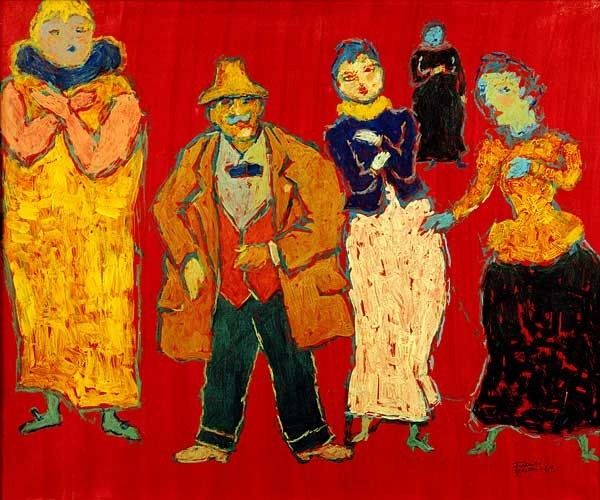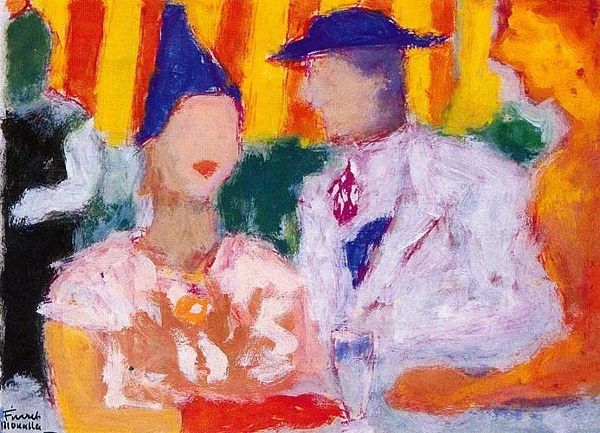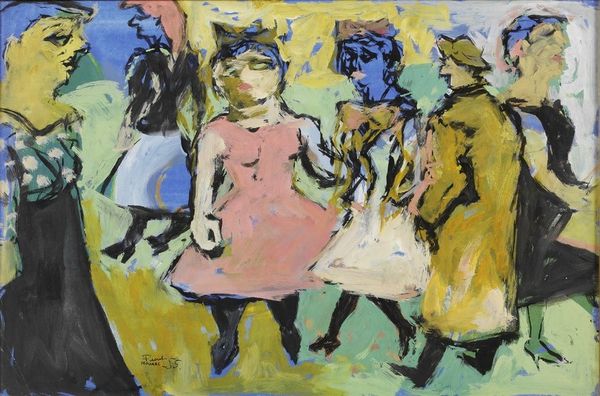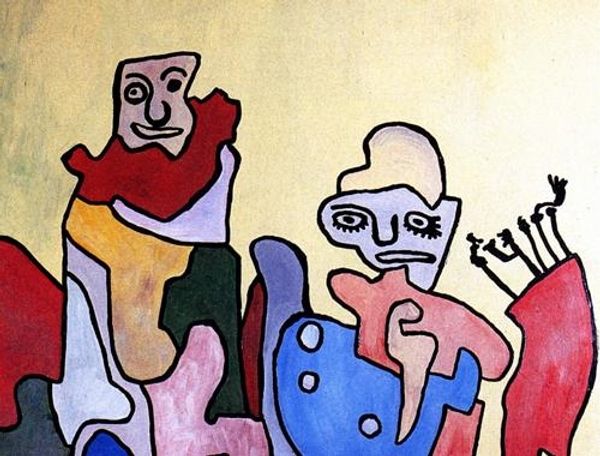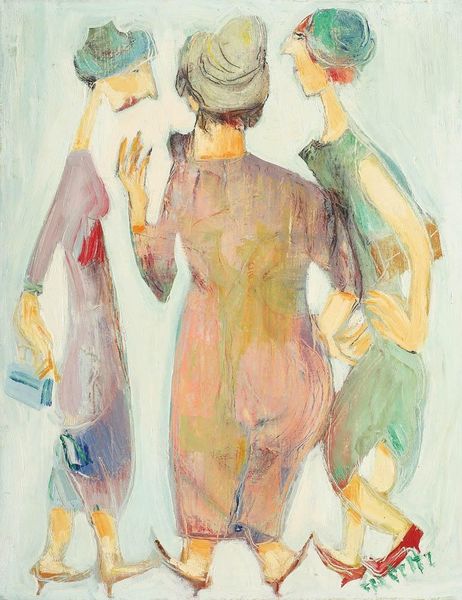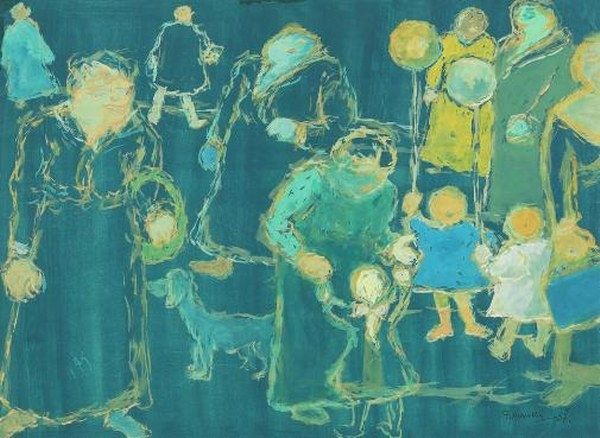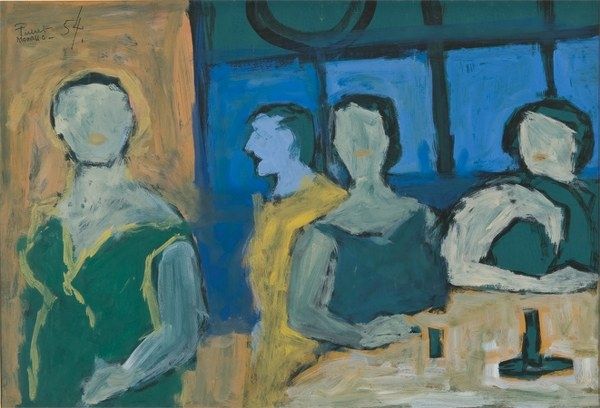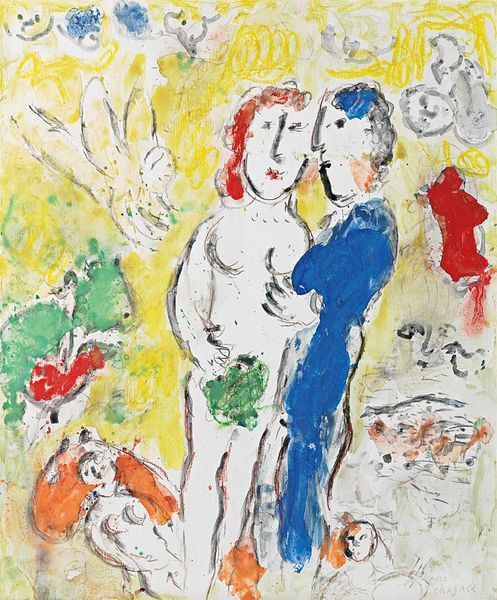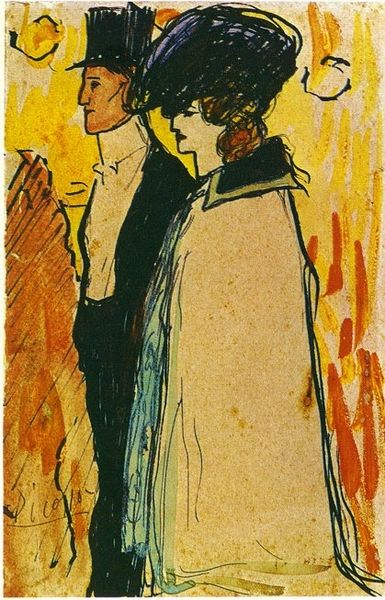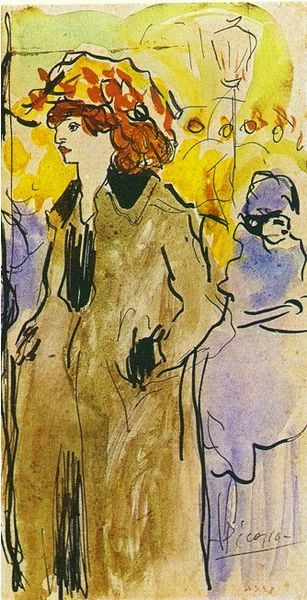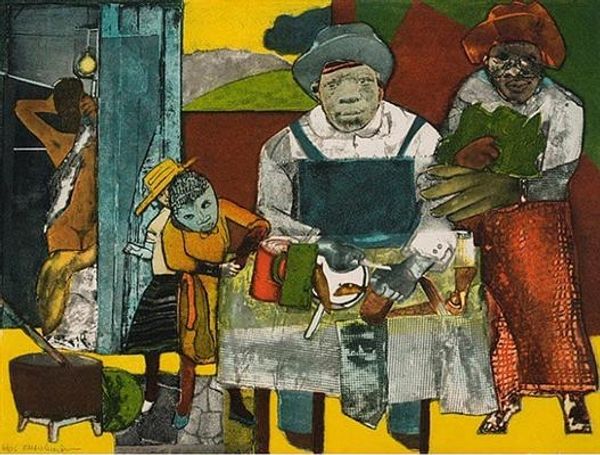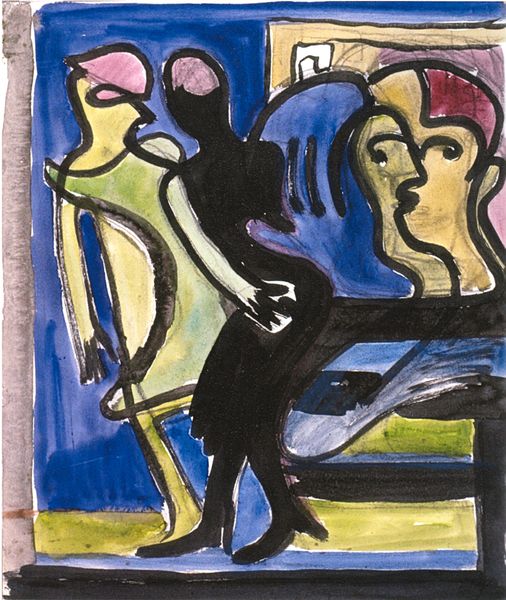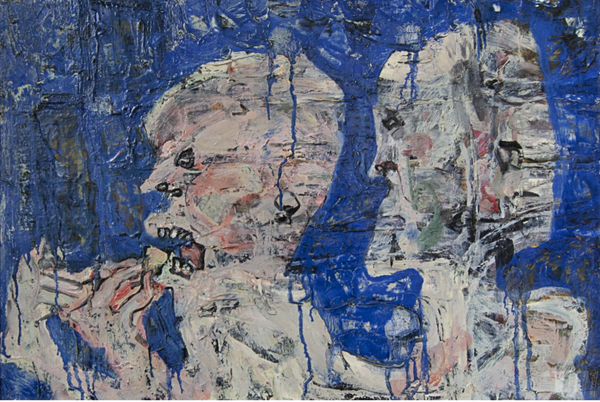
painting, oil-paint
#
portrait
#
painting
#
impressionism
#
oil-paint
#
figuration
#
group-portraits
#
naive art
#
painting art
#
genre-painting
Copyright: Fikret Mualla Saygi,Fair Use
Editor: So, this oil painting is simply called "Blue" by Fikret Mualla Saygi. The figures almost seem to float in this bright blue space. It has an ethereal quality. What strikes you most about it? Curator: What I find compelling is the way Saygi seems to capture a particular mood of Parisian alienation, channeling figures adrift within a rapidly changing social landscape. Consider how the uniformity of the blue background flattens the space, pushing these figures to the forefront, almost like characters in a street theatre production. Do you notice how their isolation is accentuated by their outward gazes? Editor: Yes, definitely! Each figure seems lost in their own world, despite being so close together. They almost don't interact with each other! What statement could Saygi be making through this choice? Curator: Well, looking at the socio-political context of Paris at that time is critical. The art world was heavily influenced by discussions of modernity and the impact of urbanization on individual experience. Saygi perhaps offers a commentary on how rapid social changes create fragmented human experiences within public spaces. Think about the tradition of *flânerie*-- the practice of strolling in the city--and how Saygi uses it to emphasize disconnection rather than connection. Editor: That's interesting. The colors also create this tension; the juxtaposition of vibrant clothing against these blue, melancholic faces makes a potent statement on class divides within that Parisian life. Curator: Precisely! The visual contrasts in color and form contribute to this discourse about marginalization, displacement and longing that Saygi seems to embed into "Blue." How do you think that Saygi's biography, marked by exile and personal struggles, informed the political message here? Editor: It paints the entire composition in a new light. The work resonates differently knowing that the artist faced so much upheaval and that their biography permeates these figures that speak so powerfully to their own dislocation within a fractured, urban landscape. Curator: It reminds us that art, at its best, makes profound comments on social conditions, personal narratives and political upheavals through its most subtle choices. I find this such a compelling example of the intersection of art, history and society. Editor: I completely agree. Thanks for your insightful perspective!
Comments
No comments
Be the first to comment and join the conversation on the ultimate creative platform.
